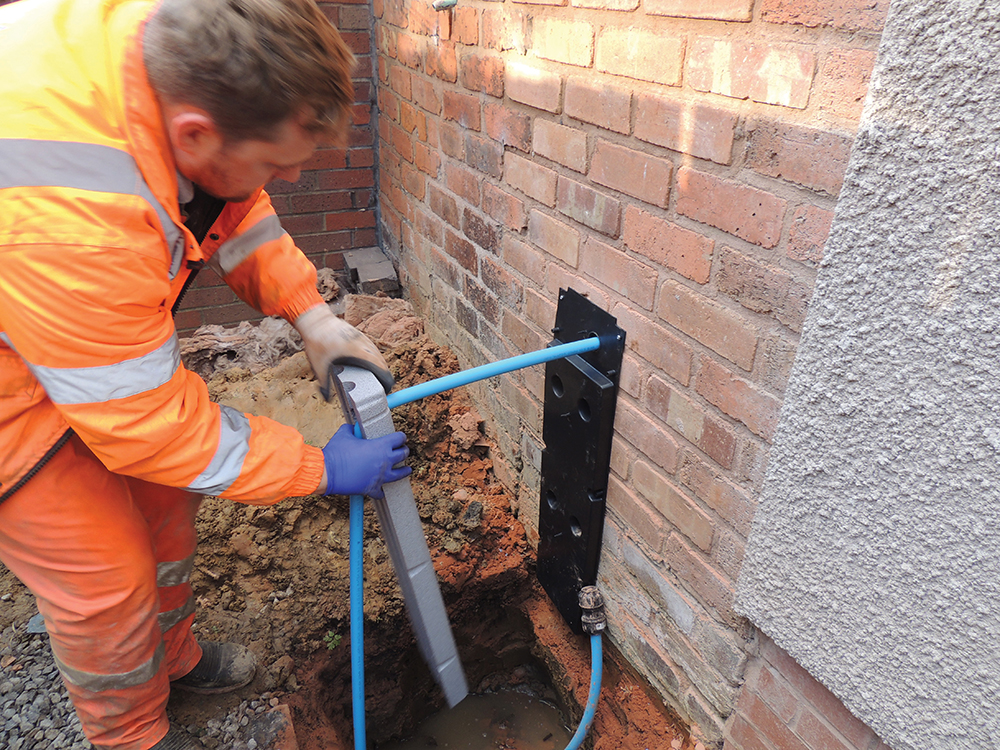As cities worldwide face increasing challenges related to aging infrastructure, sustainable water management has become a critical priority. One innovative solution that is gaining traction is trenchless water pipe replacement. This method offers significant advantages over traditional open-cut techniques, allowing cities to future-proof their water systems while minimizing disruption and environmental impact. Trenchless water pipe replacement involves the installation of new pipes without the need for extensive excavation. Instead of digging trenches, specialized equipment is used to bore tunnels underground, creating pathways for the new pipes. This approach offers several key benefits for sustainable water management in urban areas. First and foremost, trenchless technology significantly reduces the disruption caused by construction activities. In densely populated cities, traditional open-cut methods can lead to traffic congestion, business disruptions, and inconvenience for residents. By avoiding extensive digging and excavation, trenchless replacement minimizes these disruptions, allowing life in the city to continue with minimal interruption.

Moreover, trenchless water pipe replacement is more environmentally friendly compared to traditional methods. The reduced excavation means less soil disturbance, lower emissions from construction equipment, and decreased waste generation. This aligns with the goals of sustainable development by mitigating the environmental impact of infrastructure projects. Another advantage of trenchless technology is its ability to address challenges in challenging terrains. In urban areas with complex underground networks, such as roads, railways, and utilities, traditional excavation can be extremely challenging and costly. Trenchless methods offer a more feasible and cost-effective alternative, allowing for the replacement of water pipes even in challenging environments. New pipes installed using trenchless techniques are often made of durable materials that reduce leaks and water loss. By improving the efficiency of water distribution systems, cities can conserve valuable resources and enhance their overall water management practices. Additionally, trenchless technology enables faster project completion compared to traditional methods. The streamlined process, combined with reduced disruption and environmental impact, translates to shorter project timelines.
From a financial perspective, Vanrite plumbing trenchless sewer repair in Green Bay can offer long-term cost savings. While the initial investment in trenchless technology may be higher than traditional methods, the reduced maintenance needs and improved system longevity can result in lower lifecycle costs. Cities can allocate resources more efficiently and sustainably manage their water infrastructure budgets. Moreover, the use of trenchless techniques reflects a commitment to innovation and technological advancement in urban development. By embracing cutting-edge solutions like trenchless water pipe replacement, cities demonstrate their readiness to address infrastructure challenges proactively and adapt to future needs. Trenchless water pipe replacement is a valuable tool for future-proofing cities and promoting sustainable water management. Its benefits, including reduced disruption, environmental friendliness, versatility in challenging terrains, water conservation support, faster project completion, long-term cost savings, and technological innovation, make it a compelling choice for modern urban infrastructure projects. By incorporating trenchless technology into their water management strategies, cities can enhance resilience, efficiency, and environmental stewardship in the face of evolving urban challenges.